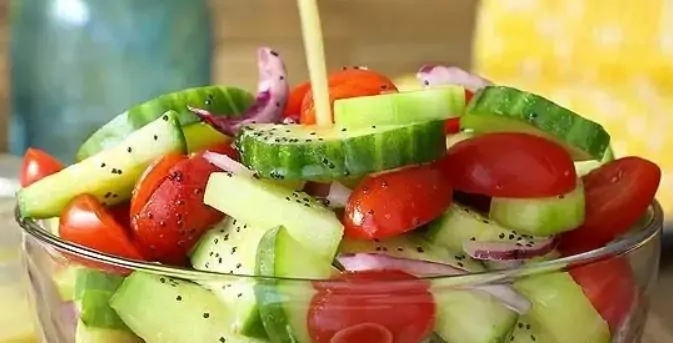
Salads are a popular and healthy choice for many, offering a refreshing medley of flavors and textures. However, not all salad combinations are created equal. One common piece of culinary advice that has stood the test of time is to never pair tomatoes and cucumbers in a salad. In this article, we will delve into the reasons behind this age-old wisdom and explore the science and taste factors that support this notion. So, if you’ve ever wondered why these two seemingly perfect salad ingredients are better off apart, read on to uncover the truth.
Tomatoes and Cucumbers: An Odd Pairing
Tomatoes and cucumbers are both beloved vegetables, often found side by side in salads. On the surface, they may appear like a match made in vegetable heaven, but the reality is quite different. When combined in the same dish, tomatoes and cucumbers can create a culinary clash that affects both taste and texture.
The acidity of tomatoes can alter the delicate flavor balance of cucumbers, potentially overpowering their mild taste. Additionally, cucumbers have a high water content, and when paired with juicy tomatoes, they can make the overall salad too watery and less enjoyable.
The Science Behind the Incompatibility
To better understand why tomatoes and cucumbers are not the best duo, let’s explore the science behind their incompatibility. Tomatoes are acidic due to the presence of citric and malic acid. When combined with the naturally mild and slightly sweet taste of cucumbers, the acidic tomatoes can overpower the cucumber’s delicate flavor.
Moreover, cucumbers have enzymes that can break down the cell walls of tomatoes, leading to a loss of texture and making the salad mushy over time. This enzymatic activity is accelerated when the vegetables are cut and mixed together.
The Dos and Don’ts of Salad Pairings
Now that we know why tomatoes and cucumbers should be kept apart, let’s delve into some dos and don’ts of salad pairings to ensure a delightful and harmonious culinary experience:
Dos
1. Complementing Textures: Choose ingredients with complementary textures, like crisp lettuce with creamy avocado or crunchy nuts with tender greens. These pairings create an enjoyable contrast in each bite.
2. Balancing Flavors: Combine sweet and savory elements to strike a perfect flavor balance. For instance, mix tangy balsamic vinegar with the sweetness of strawberries and the creaminess of goat cheese.
3. Experiment with Herbs: Add fresh herbs like basil, mint, or cilantro to elevate the taste of your salad. These aromatic additions can enhance the overall flavor profile.
LSI Keywords: Salad Pairings, Textural Contrast, Flavor Harmony
Don’ts
1. Avoid Overloading with Dressing: Too much dressing can overpower the flavors of your salad. Opt for a light drizzle and toss gently to coat all the ingredients evenly.
2. Steer Clear of Incompatible Ingredients: As we’ve discussed, avoid pairing ingredients that clash in taste or texture, such as tomatoes and cucumbers.
3. Mind the Time: Prepare your salad just before serving to retain freshness and prevent it from becoming soggy or wilted.
LSI Keywords: Dressing Ratio, Freshness, Ingredient Compatibility
Leave a Reply